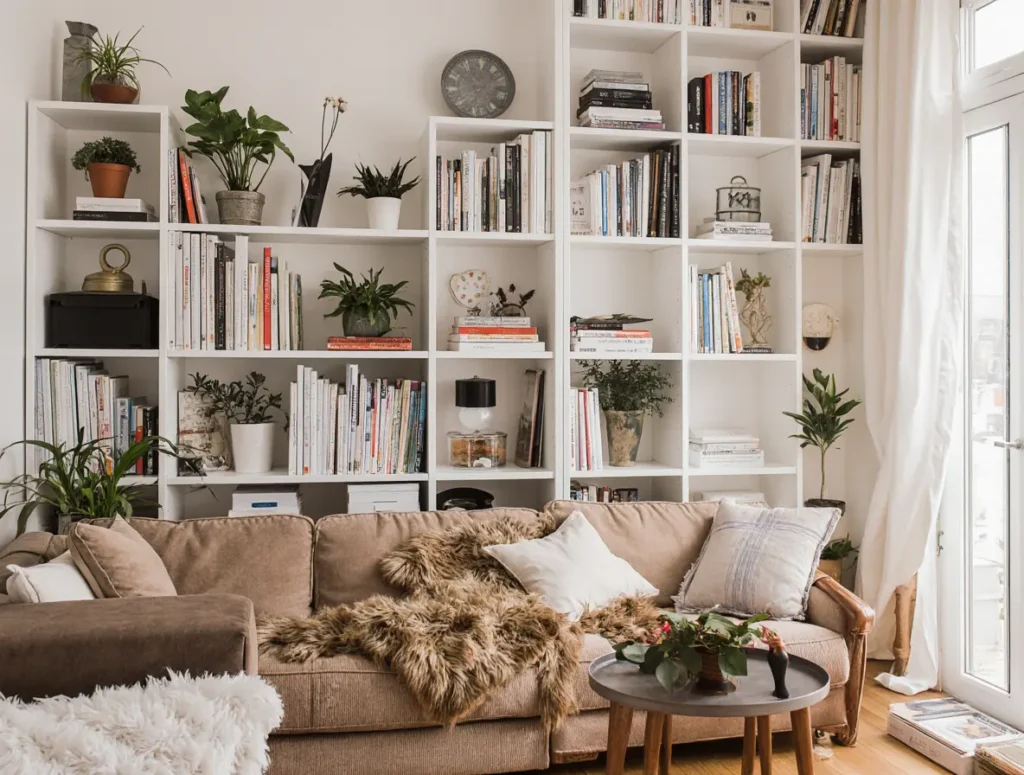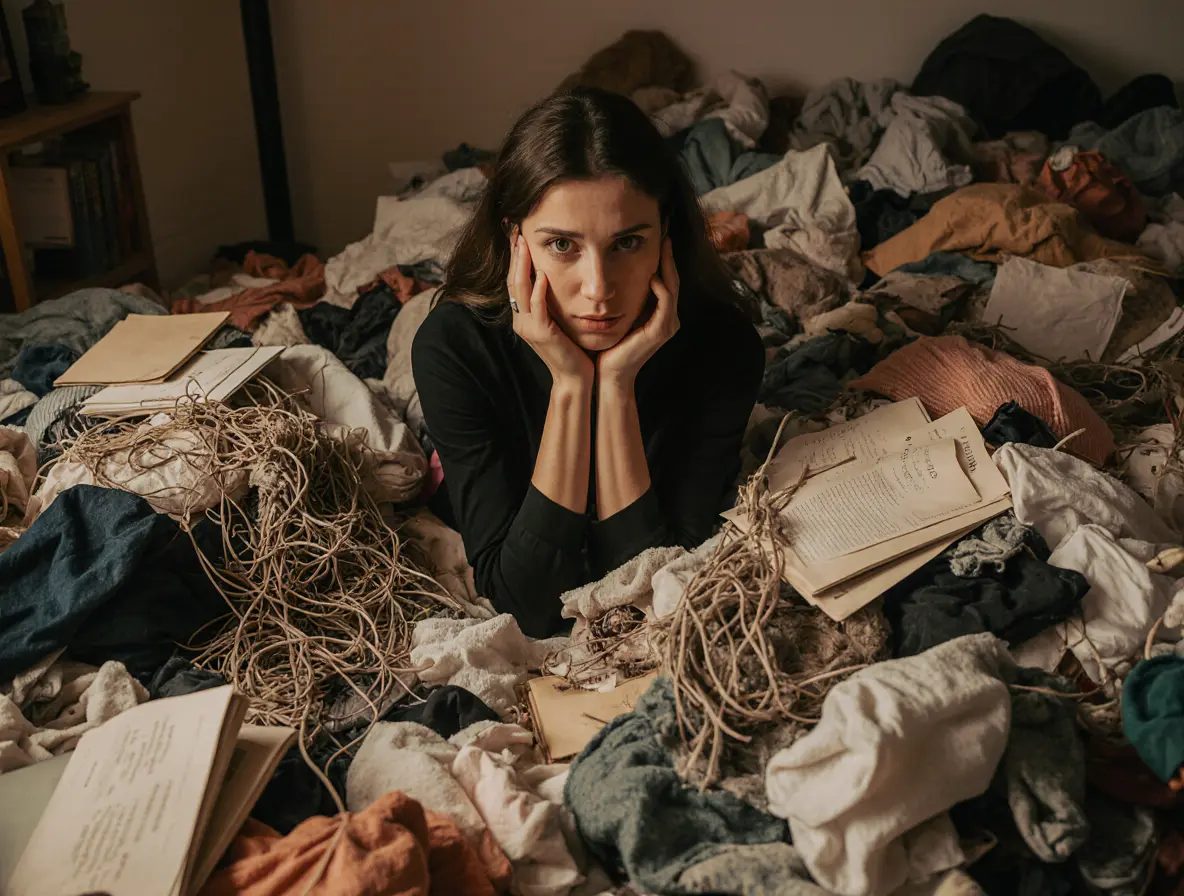Why Decluttering Isn’t Always as Simple as It Sounds
Have you ever found yourself knee-deep in piles of old clothes, dusty books, and mystery cords, thinking, “Why is this so hard?” You’re not alone. Decluttering sounds easy—just get rid of what you don’t need, right? But in reality, it’s a deeply emotional and surprisingly tricky process.
In this article, we’ll explore the most common decluttering mistakes people make (without even realizing it!) and share practical, realistic solutions for each. So grab a cup of tea, take a breath, and let’s dive into how you can declutter smarter, not harder.
Table of Contents
Holding Onto “Just in Case” Items
You know the drawer filled with random screws, mystery cables, and old batteries? Or the back-of-the-closet jacket you might wear on a camping trip someday? Keeping items “just in case” feels responsible—but it often traps us in clutter.
Think of your home like a garden: keeping every dead leaf because it might become useful one day stops new flowers from growing. It’s the same with your space.
So how do you fix this? Start by asking yourself:
- “When was the last time I used this?”
- “If I really needed it, could I borrow or replace it easily?”
One client of professional organizer Amanda Harris realized she was saving six spare coffee mugs “just in case guests came over,” but she hadn’t hosted anyone in three years. Once she let them go, she discovered she didn’t miss them—and she gained an entire shelf for things she actually used.
It’s not about being wasteful; it’s about freeing your space (and your mind) from the weight of “someday.”
Trying to Declutter Everything at Once
Have you ever decided to declutter your entire home on a Saturday morning, only to end up surrounded by chaos and feeling defeated by lunchtime? It’s like deciding to run a marathon without training first.
Decluttering is emotionally and physically draining. Tackling everything at once often leads to burnout and a bigger mess.
Instead, try the “15-minute rule.” Set a timer and work on just one drawer or one shelf at a time. Celebrate your small wins—they add up! Think of decluttering as building a muscle; you get stronger every time you practice.
Professional minimalist Joshua Becker suggests starting in easy, low-emotion areas like your bathroom or linen closet. This helps build momentum and confidence for tougher spaces later.
Remember, slow progress is still progress.
Decluttering Without a Plan
Would you set out on a road trip without a map? Decluttering without a plan often leads to piles of “keep,” “maybe,” and “not sure,” which just shuffle clutter around instead of removing it.

A clear plan keeps you focused and reduces decision fatigue. Here’s a simple one to try:
- Choose one room or category.
- Set your goal (e.g., “I want to clear half of my bookshelves”).
- Gather supplies (boxes labeled Donate, Sell, Trash, and Keep).
- Schedule a specific time to drop off donations—don’t let them sit in the car for weeks.
One reader shared that after making a decluttering checklist, she finally tackled her storage closet she’d avoided for years. Crossing off each task kept her motivated, and by the end, she felt lighter—both literally and emotionally.
Planning doesn’t make decluttering rigid; it makes it possible.
Letting Sentimental Items Hold You Hostage
It’s normal to struggle with letting go of things tied to memories: your child’s baby clothes, inherited dishes from grandma, or your wedding dress. But keeping everything because it reminds you of someone or something can keep your home stuck in the past.
Imagine your home is a photo album: it should tell your story, but it can’t hold every snapshot you’ve ever taken.
Try these tips:
- Keep a few truly meaningful items instead of the entire box.
- Photograph items before donating them.
- Repurpose keepsakes (turn an old concert t-shirt into a pillow cover).
One woman transformed her grandmother’s broken teacups into a mosaic table. She kept the memory—and gained a beautiful new piece for her home.
Memories live in you, not in things.
Confusing Organizing with Decluttering
Buying pretty bins and labeling every box isn’t decluttering—it’s organizing. Decluttering is about removing what you don’t need; organizing is about arranging what you choose to keep.
Picture it like this: decluttering is taking the weeds out of your garden; organizing is planting the flowers in neat rows.
Many people rush to buy storage solutions before deciding what to keep. This leads to wasted money and crowded closets.
Before you buy anything new, declutter first. You might discover you already have enough space—or that you need fewer organizers than you thought.
Professional organizer Marie Kondo famously says, “The best way to find out what we truly need is to get rid of what we don’t.”
Keeping “Maybe” Piles Forever
The “maybe” pile is the trickiest of all. It feels safe: you’re not committing to keeping or tossing. But left unchecked, it becomes a permanent clutter zone.
Set rules for your “maybe” items:
- Put them in a sealed box.
- Label it with today’s date.
- If you don’t open the box in six months, donate it—without reopening.
One reader tried this with a box of old DVDs. After six months, she couldn’t even remember what was inside—and happily donated the entire box.
Trust your future self: if you don’t miss it, you didn’t need it.
Underestimating Emotional Fatigue
Decluttering isn’t just physical work; it’s emotional work too. Sorting through childhood toys, photos, or clothes from a different life stage can be draining.

Have you ever felt exhausted after just an hour of decluttering? That’s normal.
Give yourself permission to take breaks. Play music you love, invite a friend to help, or reward yourself after finishing a session.
Therapist Emily Carter explains that letting go often means grieving who we used to be. Recognizing this can help you be kinder to yourself.
Remember: decluttering is a journey, not a race.
Not Defining Your “Why”
Without a clear reason for decluttering, it’s easy to stop halfway. Are you decluttering to make mornings easier? To create space for a hobby? To feel less anxious?
Your “why” acts like a compass when motivation fades.
Write your “why” on a sticky note and keep it visible. One parent wrote, “To have space to play with my kids on the living room floor,” and it helped them stay focused.
Decluttering isn’t just about less stuff—it’s about more of what matters.
Conclusion: Declutter Smarter, Live Freer
Decluttering mistakes don’t mean you’re failing—they mean you’re human. We all fall into traps like keeping “just in case” items or trying to do too much at once. By recognizing these mistakes, you can sidestep them and create a calmer, happier home.
Think of decluttering not as a chore, but as a gift to your future self—a gift of space, peace, and possibility.
Ready to start fresh?
FAQs
1. How often should I declutter?
It depends on your lifestyle, but reviewing each area of your home once or twice a year keeps clutter from creeping back in.
2. What should I do if my family won’t declutter?
Start with your own belongings. Your progress often inspires others. You can also gently explain your “why” to help them understand.
3. Is it okay to keep some sentimental items?
Absolutely! The goal isn’t to live with nothing, but to keep only what truly adds value or joy.
4. What’s the best first area to declutter?
Start with low-emotion areas like your bathroom or pantry to build confidence before tackling sentimental spaces.
5. How do I keep clutter from coming back?
Adopt the “one in, one out” rule: for every new item you bring home, let go of one. Regular small edits prevent big messes.

